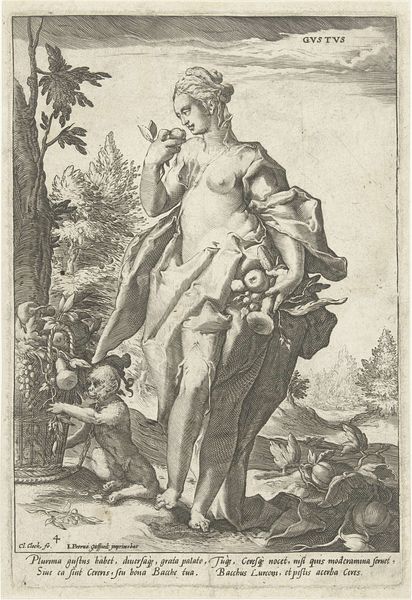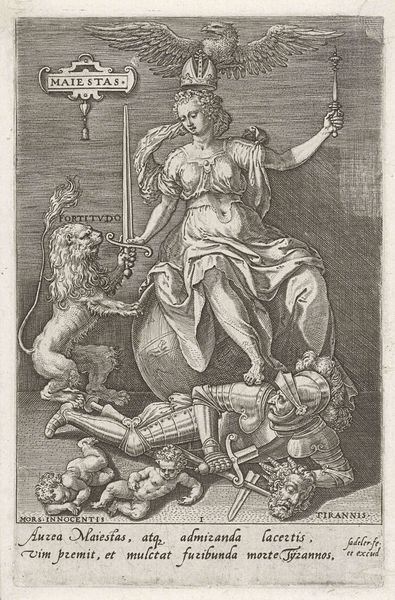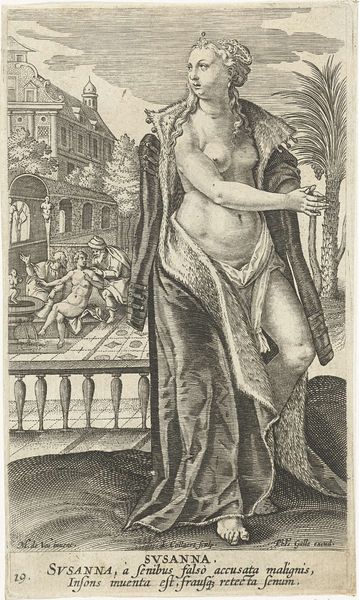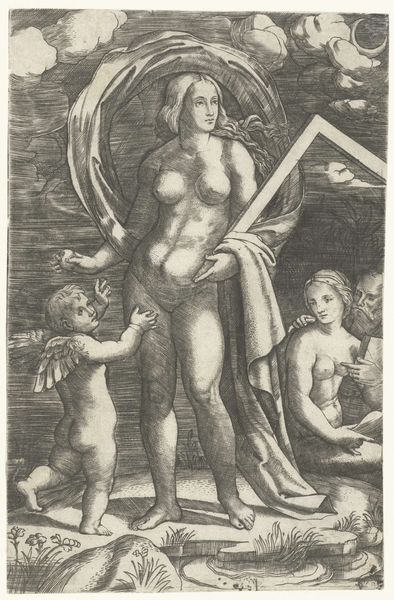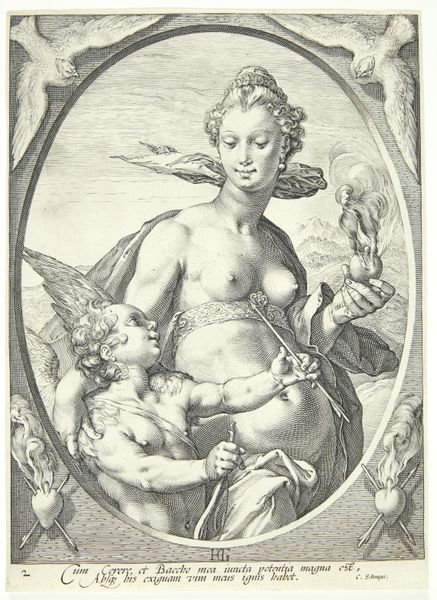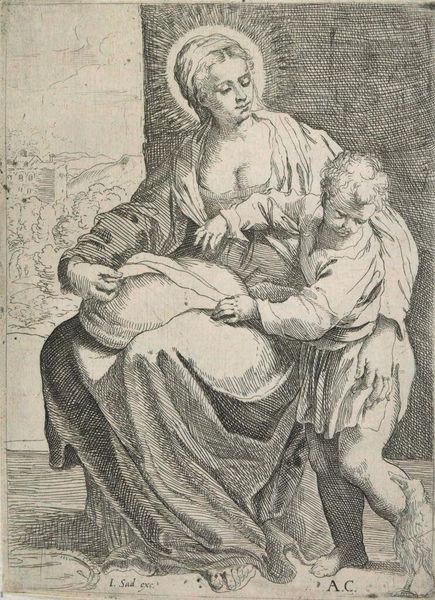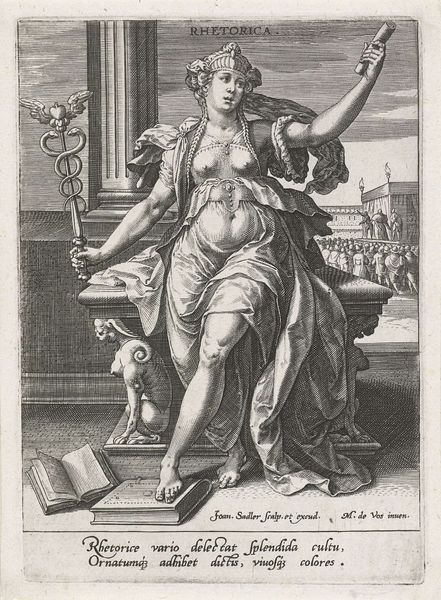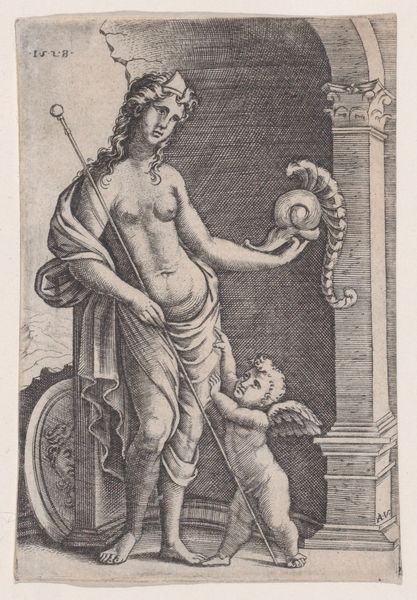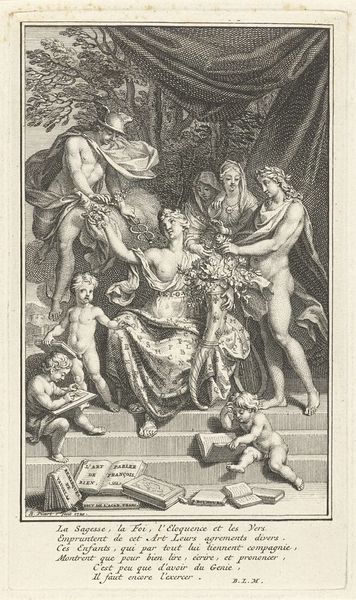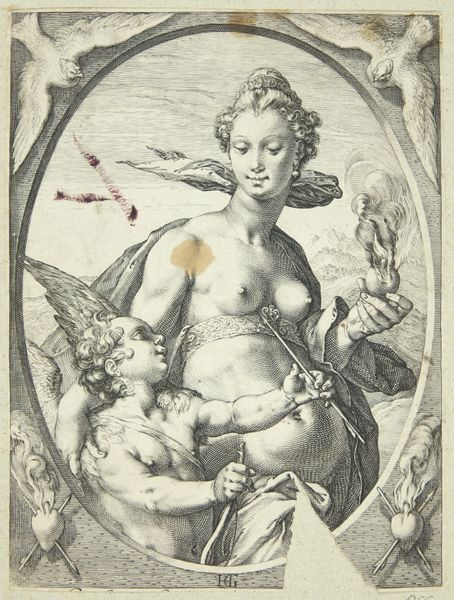
Muze Clio met trompet en melk spuitend uit haar borst, zwaan en putti bij haar voeten 1644
0:00
0:00
print, engraving
#
portrait
#
allegory
#
baroque
# print
#
old engraving style
#
caricature
#
unrealistic statue
#
limited contrast and shading
#
portrait drawing
#
engraving
Dimensions: height 131 mm, width 75 mm
Copyright: Rijks Museum: Open Domain
Curator: Here we have a rather striking engraving from 1644 by Cornelis van Dalen I, titled "Muze Clio met trompet en melk spuitend uit haar borst, zwaan en putti bij haar voeten," housed at the Rijksmuseum. Editor: The sheer, unrestrained exuberance hits me first! It's almost comically overflowing with symbols and baroque theatricality. Curator: Yes, let’s dive into the making. Engravings like these involved highly skilled labor and painstaking processes. Think of the tools, the workshops, the apprenticeship involved. Editor: And speaking of process, consider the cultural weight Van Dalen intended. Clio, muse of history, transformed into…well, a maternal fount. Milk spurting forth, representing poetic inspiration. It’s quite bold, even absurd! Curator: It certainly plays with notions of high art and the material conditions necessary for producing such allegorical work. The engraving process allowed for mass production and dissemination of these ideas. Note the publisher’s address at the bottom: "t Amsterdam by Joost Hartgers." This wasn’t rarefied art; it was commerce. Editor: Absolutely. Commerce tied directly to myth! A trumpet symbolizes fame, laurel wreath indicating achievement, while cupids cavort with a swan, emblems of love and harmony. It all points to the potent cultural values ascribed to poetry and artistic creation at the time. Curator: Interesting that this idealized female form and associated symbolic system had a physical production that involved artisans, workshops and, importantly, a marketplace where printed copies were bought and sold. Editor: But don't you think the seemingly contradictory nature of such symbols reflects something deeper about art and human history? Clio represents serious history but the treatment in the work has a sense of lightness, not completely committed to a traditional form. Curator: That’s quite possible. But analyzing the socio-economic background, these objects tell us as much about a global trade network of the 17th-century as ancient allegorical associations. Editor: Perhaps! Regardless, tracing this image and symbols offers a window into both how things were created and what people valued through visual symbols, revealing connections across time. Curator: A final point of appreciation to the detailed labour, both the design process and production, with many contributing steps for even one example that still remains. Editor: Indeed. "Vondels Poezy" the text above the central figure implies that, perhaps, poetry of all sources still retains the human, material dimension within.
Comments
No comments
Be the first to comment and join the conversation on the ultimate creative platform.


